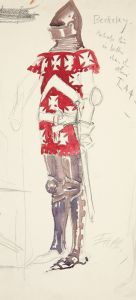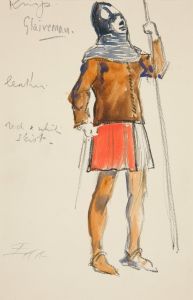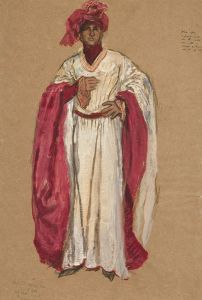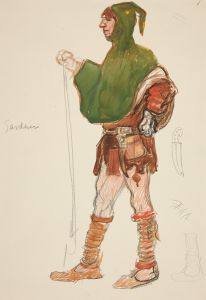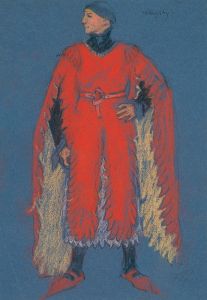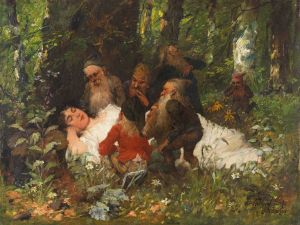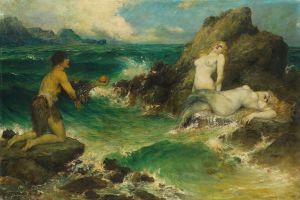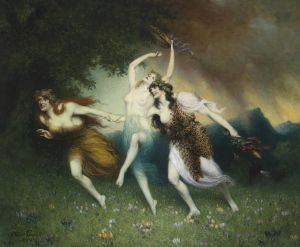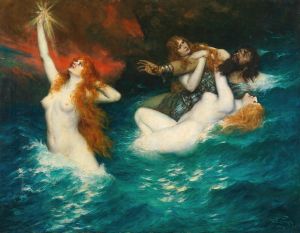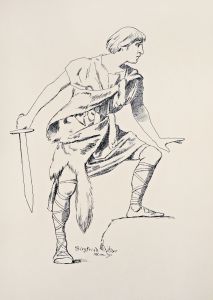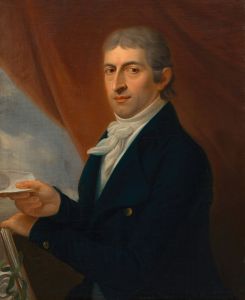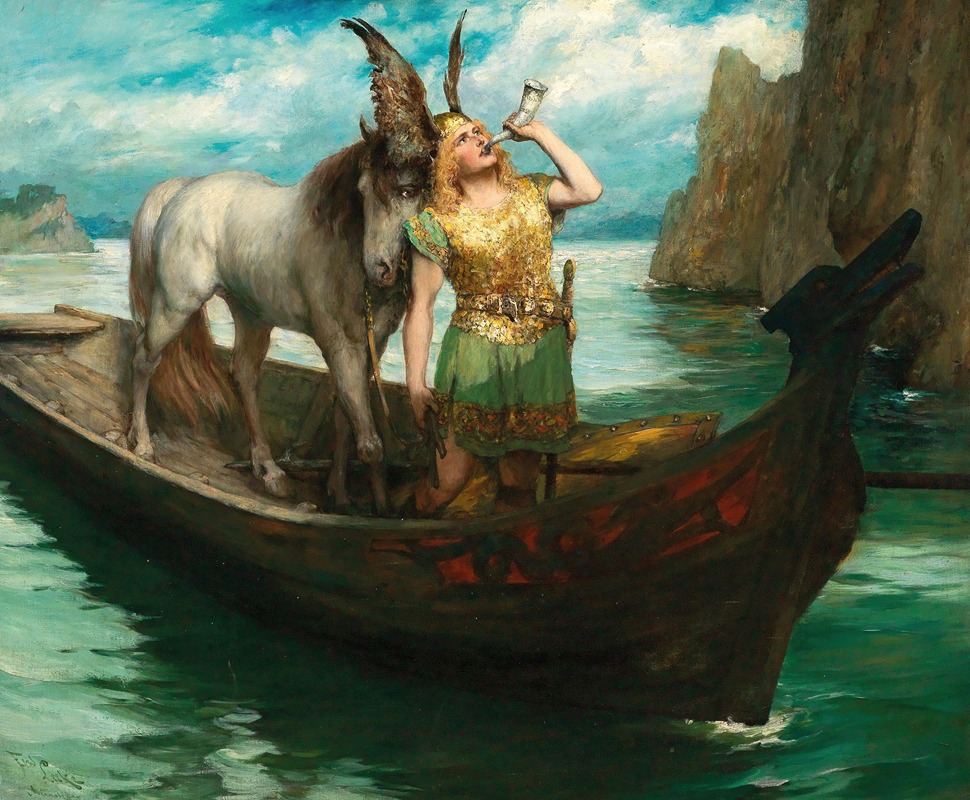
Richard Wagner, Götterdämmerung, Act I, Siegfried’s Rhine Journey
A hand-painted replica of Ferdinand Leeke’s masterpiece Richard Wagner, Götterdämmerung, Act I, Siegfried’s Rhine Journey, meticulously crafted by professional artists to capture the true essence of the original. Each piece is created with museum-quality canvas and rare mineral pigments, carefully painted by experienced artists with delicate brushstrokes and rich, layered colors to perfectly recreate the texture of the original artwork. Unlike machine-printed reproductions, this hand-painted version brings the painting to life, infused with the artist’s emotions and skill in every stroke. Whether for personal collection or home decoration, it instantly elevates the artistic atmosphere of any space.
Ferdinand Leeke was a German painter known for his works that often depicted scenes from operas and mythological subjects. One of his notable works is the painting "Siegfried’s Rhine Journey," which is inspired by Richard Wagner's opera "Götterdämmerung," the final opera in the epic cycle "Der Ring des Nibelungen."
Richard Wagner, a seminal figure in the history of Western music, composed "Götterdämmerung" between 1869 and 1874. The opera is renowned for its complex music and profound themes, drawing from Norse and Germanic mythology. "Götterdämmerung" translates to "Twilight of the Gods," and it concludes the saga of the Ring cycle, which explores themes of power, betrayal, and redemption.
"Siegfried’s Rhine Journey" is a pivotal orchestral interlude in Act I of "Götterdämmerung." This musical passage accompanies the hero Siegfried as he travels down the Rhine River, leaving behind Brünnhilde, whom he has just bid farewell. The music captures the grandeur and majesty of the river journey, reflecting Siegfried’s heroic nature and the impending doom that looms over the characters.
Ferdinand Leeke's painting captures this moment with vivid imagery. Leeke was known for his ability to translate Wagner's dramatic and musical intensity into visual art. In "Siegfried’s Rhine Journey," Leeke likely aimed to encapsulate the essence of the music and the narrative moment it represents. The painting would typically depict Siegfried in a boat on the Rhine, surrounded by the natural beauty of the landscape, which is a common interpretation of this scene in Wagnerian art.
Leeke's work is part of a broader tradition of visual art inspired by Wagner's operas. During the late 19th and early 20th centuries, Wagner's music dramas were a significant source of inspiration for artists, who sought to capture the operas' mythological and emotional depth. Leeke, along with other artists, contributed to this tradition by creating works that visually represented key moments from Wagner's operas.
The painting "Siegfried’s Rhine Journey" is an example of how Wagner's music transcended the auditory experience and influenced other art forms. Leeke's interpretation provides a visual narrative that complements Wagner's musical storytelling, offering audiences a way to engage with the opera beyond the stage.
Ferdinand Leeke's contributions to Wagnerian art are part of his broader oeuvre, which includes numerous paintings inspired by Wagner's operas. His works are characterized by their attention to detail and their ability to convey the dramatic and emotional intensity of the scenes they depict. Leeke's paintings remain a testament to the enduring influence of Wagner's music on visual arts and continue to be appreciated by audiences interested in the intersection of music and art.
In summary, Ferdinand Leeke's "Siegfried’s Rhine Journey" is a significant work that captures a key moment from Wagner's "Götterdämmerung." Through his painting, Leeke provides a visual interpretation of the music and narrative, contributing to the rich tradition of Wagnerian art.





